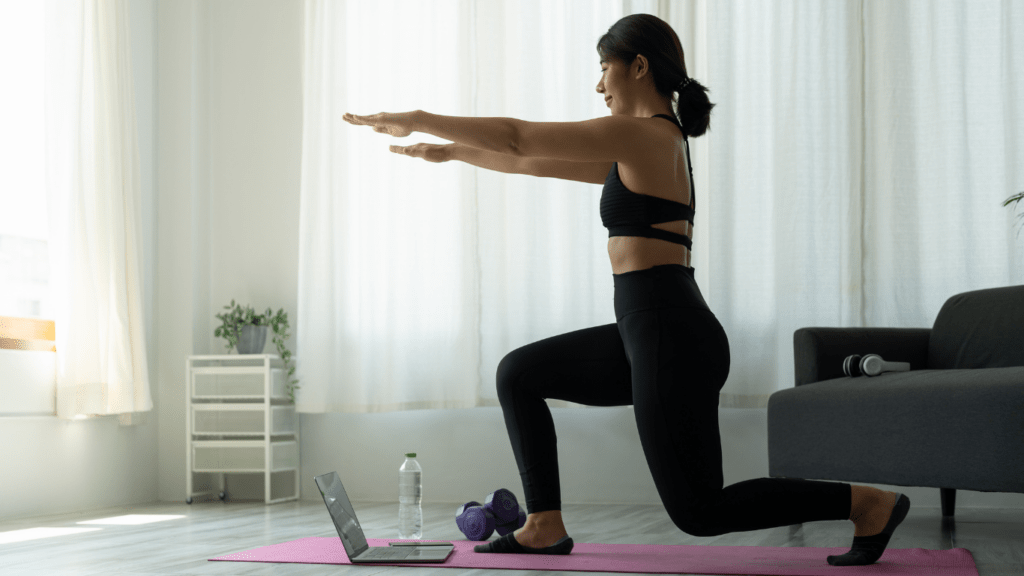When it comes to maintaining joint health, incorporating low-impact exercises into your routine can make a significant difference. As someone who values staying active while protecting my joints, I understand the importance of choosing the right exercises to support overall joint well-being.
In this article, I’ll share insights on the benefits of low-impact exercises and how they can help improve joint health over time. Whether you’re managing joint pain or simply aiming to prevent future issues, low-impact exercises offer a gentle yet effective way to strengthen muscles, increase flexibility, and reduce strain on your joints.
From swimming and walking to yoga and cycling, there are plenty of options to explore that prioritize joint health without sacrificing the benefits of physical activity. Join me as we delve into the world of low-impact exercises and discover how they can be a game-changer for your joint health journey.
Benefits of Low-Impact Exercises for Joint Health
Exploring the benefits of incorporating low-impact exercises into my routine, I’ve discovered how these activities play a key role in enhancing joint health.
By engaging in gentle yet effective workouts, I can experience the following advantages:
- Improved Joint Function: Low-impact exercises help strengthen the muscles surrounding the joints, enhancing stability and improving overall joint function.
- Reduced Joint Pain: Engaging in activities like swimming or yoga can reduce joint pain by promoting circulation and flexibility without putting excessive stress on the joints.
- Enhanced Flexibility: These exercises increase flexibility, making daily movements easier and reducing the risk of injuries related to joint stiffness.
- Joint Protection: By focusing on low-impact movements, I can protect vulnerable joints from strain and potential damage, promoting long-term joint health.
- Weight Management: Regular participation in low-impact exercises supports weight management, reducing the pressure on joints and decreasing the likelihood of joint-related issues.
- Active Lifestyle Support: Low-impact exercises offer a sustainable way to stay active, enabling me to maintain a healthy lifestyle while prioritizing joint health.
By understanding the benefits of low-impact exercises for joint health, I can make informed choices to support my overall well-being and enhance my joint health journey.
Best Low-Impact Exercises for Joint Health
When considering low-impact exercises for joint health, options like walking, swimming, and cycling stand out as effective choices. These activities offer a range of benefits that support joint well-being while allowing for an active lifestyle.
Walking
Walking is a fantastic low-impact exercise that helps improve joint function by strengthening the surrounding muscles. It also aids in reducing joint pain through enhanced circulation and increased flexibility.
Walking not only protects vulnerable joints from strain but also supports weight management to alleviate pressure on joints. Incorporating regular walks into your routine can significantly contribute to a sustainable active lifestyle while enhancing joint health.
Swimming
Swimming is a superb low-impact exercise that provides a full-body workout while being gentle on the joints. This activity enhances joint flexibility, supports muscle strength, and promotes cardiovascular health.
The buoyancy of water reduces the impact on joints, making swimming an ideal choice for individuals with joint issues. Regular swimming sessions can help improve joint mobility, reduce stiffness, and increase overall fitness levels, making it a valuable exercise for joint health maintenance.
Cycling
Cycling is an excellent low-impact exercise that offers a cardiovascular workout without putting excessive stress on the joints. This activity helps strengthen leg muscles, enhance joint mobility, and improve overall fitness.
Cycling also aids in maintaining a healthy weight, which is essential for reducing pressure on the joints. Whether outdoor biking or using a stationary bike, cycling is a versatile and joint-friendly exercise that can be easily integrated into your fitness routine to support joint health and overall well-being.
Tips for Incorporating Low-Impact Exercises into Your Routine
Exploring low-impact exercises offers a myriad of benefits for joint health.
Here are some practical tips on seamlessly integrating these exercises into your daily routine:
- Set Realistic Goals: Prioritize consistency over intensity to establish a sustainable exercise regimen that supports your joint health in the long run. Start with achievable goals and gradually increase the duration or intensity as your fitness level improves.
- Mix Up Your Routine: Keep your workouts engaging and diverse by incorporating a variety of low-impact activities such as swimming, walking, yoga, or cycling. This not only prevents monotony but also targets different muscle groups to enhance overall joint strength.
- Listen to Your Body: Pay attention to any discomfort or pain during exercise. Modify activities that cause joint pain or seek guidance from a healthcare professional to ensure you’re engaging in exercises that are safe and beneficial for your specific joint health needs.
- Warm-Up and Cool Down: Prioritize warm-up exercises to prepare your muscles and joints for physical activity, reducing the risk of injury. Incorporate gentle stretches and cool-down routines post-workout to aid in muscle recovery and maintain flexibility.
- Stay Hydrated and Nourished: Hydration is key to maintaining joint lubrication and overall physical performance. Ensure you’re adequately hydrated before, during, and after exercise. Additionally, focus on a balanced diet rich in nutrients that support joint health to complement your low-impact exercise regimen.
- Invest in Proper Footwear: Choose supportive footwear that provides cushioning and stability, especially for activities like walking or jogging. Proper shoes can help reduce impact on your joints and prevent potential injuries during low-impact exercises.
- Monitor Progress: Keep track of your workouts, progress, and any discomfort experienced during exercise. Adjust your routine as needed based on how your joints respond to different activities, ensuring that you’re continually improving while safeguarding your joint health.
Incorporating these tips into your low-impact exercise routine can empower you to maintain optimal joint health and lead an active lifestyle with confidence.
Precautions to Consider Before Starting Low-Impact Exercises
Before embarking on any new exercise routine, it’s crucial to consider a few precautions to safeguard your joint health and overall well-being. Here are some essential factors to keep in mind:
- Consultation with a Healthcare Provider: Before starting low-impact exercises, it’s advisable to consult with a healthcare provider or a fitness professional, especially if you have pre-existing joint conditions or injuries. They can provide personalized advice based on your specific health needs.
- Proper Form and Technique: Ensuring proper form and technique is essential to prevent potential joint injuries during exercise. It’s beneficial to start with a qualified instructor or physical therapist to learn the correct movements and postures.
- Gradual Progression: To avoid overloading your joints, it’s crucial to gradually increase the intensity, duration, and frequency of your low-impact workouts. Rushing into high-intensity exercises can strain your joints and lead to discomfort or injuries.
- Listening to Your Body: Pay attention to any discomfort, pain, or unusual sensations during exercise. It’s important to listen to your body’s signals and modify your workout or seek professional guidance if you experience persistent pain or discomfort.
- Appropriate Warm-up and Cool-down: Prioritize warm-up exercises to prepare your muscles and joints for activity, helping reduce the risk of injury. Incorporating a proper cool-down routine can also aid in relaxing muscles and promoting recovery after exercise.
- Proper Equipment and Attire: Wearing appropriate footwear and clothing suitable for low-impact activities can enhance your comfort and support during exercise. Invest in well-fitted shoes with good cushioning to minimize impact on your joints.
Remember, taking these precautions before starting low-impact exercises can help you enjoy the benefits of physical activity while protecting your joint health. Always prioritize safety and listen to your body’s needs for a sustainable and effective workout routine.



 Founder
Damond Boucherley is the visionary founder of Aura Nature Spark, dedicated to promoting well-being through holistic practices. With a passion for nutrition, exercise, and mindfulness, Damond brings years of experience in health and wellness to the forefront of the organization. He believes in the transformative power of nature and is committed to providing valuable insights and resources that inspire individuals to live their best lives. Under his leadership, Aura Nature Spark continues to grow as a trusted source for health enthusiasts seeking balance and vitality.
Founder
Damond Boucherley is the visionary founder of Aura Nature Spark, dedicated to promoting well-being through holistic practices. With a passion for nutrition, exercise, and mindfulness, Damond brings years of experience in health and wellness to the forefront of the organization. He believes in the transformative power of nature and is committed to providing valuable insights and resources that inspire individuals to live their best lives. Under his leadership, Aura Nature Spark continues to grow as a trusted source for health enthusiasts seeking balance and vitality.
